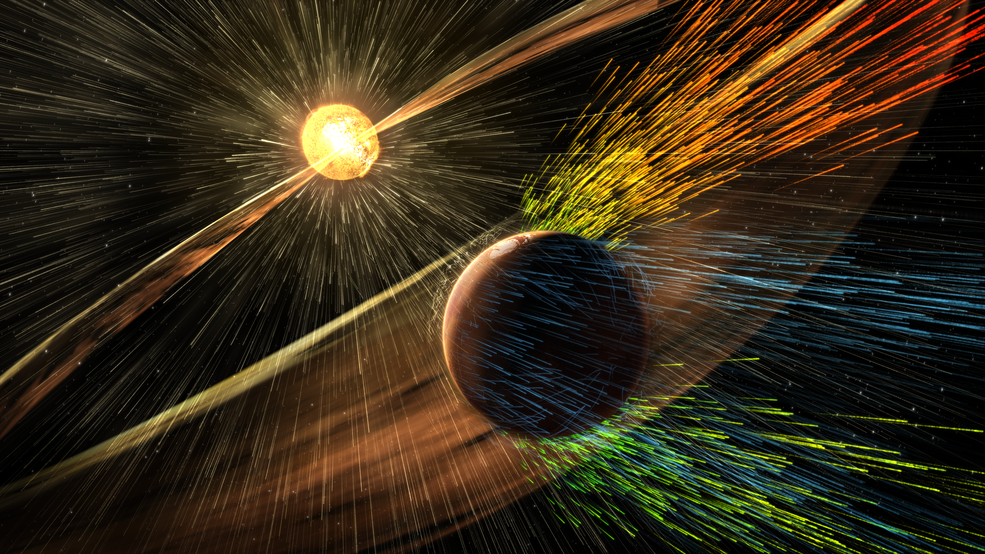The MAVEN spacecraft in orbit around Mars recorded an unusual phenomenon in the form of the disappearance of the solar wind. This led to a dramatic expansion of the Martian atmosphere.

Mars, like all the planets in our Solar System, is constantly “washed” by the flow of the solar wind. Its charged particles interact with the gas shell, exerting pressure on it. In addition, since Mars does not have a magnetic field, the solar wind constantly knocks atoms out of the atmosphere, which then fly off into interplanetary space. It is believed that due to this process, the Red Planet has lost most of its gas envelope and water reserves.
But in December 2022, the operation of this mechanism was suspended. The instruments of the MAVEN spacecraft registered an almost complete “disappearance” of the stream of charged particles emitted by the Sun. As the density of the solar wind dropped by a factor of 100, this led to the magnetosphere and ionosphere of the Red Planet being able to expand by thousands of kilometers. They have increased by more than three times their normal size and radically changed their character. The magnetic field of the Sun, located inside the Martian ionosphere, was pushed outward, which transformed the ionosphere from a magnetized to a demagnetized state. At the same time, the layer between the solar wind and the magnetosphere became unusually electromagnetically quiet.
The event was caused by the faster solar wind overtaking the slower solar wind, which acted like a broom, sweeping and squeezing the two areas together. Their interaction left behind a region of extremely low solar wind density, which was observed by MAVEN.
As the Sun approaches its maximum activity, MAVEN will be able to record even more such events. Scientists will be able to better understand the features of the Martian atmosphere.
According to https://www.nasa.gov
Follow us on Twitter to get the most interesting space news in time
https://twitter.com/ust_magazine


